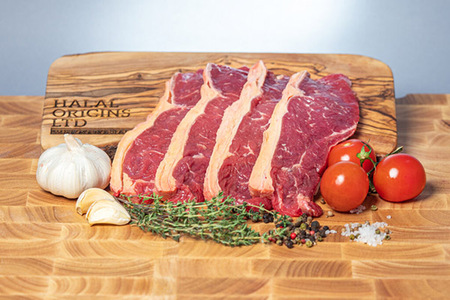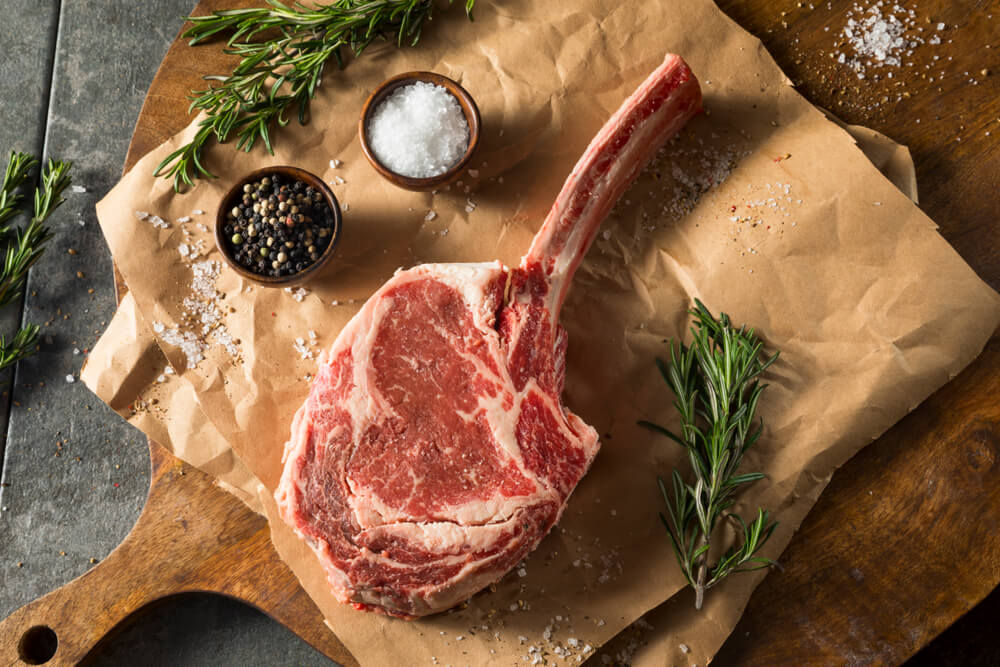Previously in part one of our guide we delved into the different steak types, where they come from, and how to best cook them. This week we continue the learning with even more steak options.
We hope you’ve been busy trying some of these wonderful dishes at home. Halal Origins prides itself on its organic cuts of meat that provide the highest quality meat and the deepest depth of flavour.
Part two of this guide covers some of the lesser-known steak cuts, which are already popular in the United States and they are gaining traction here in the United Kingdom. This is your opportunity to get ahead of the crowd and become a trendsetter at your next dinner party or BBQ.
Back to the learning.
Sirloin
Sirloin is a slightly contentious steak. Coming from the upper-rear side of the cow, it is a tougher meat that’s low in fat. It has a deep and darker tone of flavour compared to other beef cuts, which isn’t appreciated by everyone. This is because sirloin’s tougher nature requires you to cook it a little more, which can take out the rare quality that many enjoy in their steaks.
Having said that the deep beef flavour of sirloin really packs a punch and being a cheaper cut of meat, it is a great option for a mid-week treat.
Cooking tips: This is a very lean and slightly tough steak, so it is very easy to overcook. Use a high heat and aim for a medium tone with a hint of rare, if you can.

London Broil
London broil is actually a misnomer because it is a cooking method for steak rather than a cut, but you will often see it on menus, so we figured it is worth mentioning. It is usually taken from the round or rump of the cow, which makes it a chewier, but lean meat with a deeper beefy tone of flavour.
You can find this steak in some supermarkets, so make sure to check what cut it comes from so you know how best to cook it. London broil is a mid-market steak, which makes it enjoyable for everyone.
Cooking tips: Being a tougher meat we recommend marinating this meat in an acidic sauce for several hours before cooking (at least 3-4). This will help break down some of the protein fibres, which will make the meat softer, and easier to cook and eat. London broil is normally preferred in the medium range, so cook on high heat until brown. Once cooked, slice against the grain and let it sit for a few minutes to absorb some flavour.
The Tomahawk (also known as a cowboy steak)
This juicy and delicious steak is reminiscent of a caveman’s dinner. The huge rib bone that remains on the ribeye steak gives this famous steak character and flavour. It is normally served as a very thick piece of meat that is enough to serve a feast for a crowd, but who is sharing? With this much flavour, this culinary treat will keep you feeding long after you are full.
As you would expect, the tomahawk is an upper-market cut that comes with a higher price tag, but it’s such a treat that you literally won’t mind forking out for it.

Cooking tips: The sheer thickness of this steak requires special attention. For best results heat up a cast iron pan or grill. Once the surface is lava-hot place the steak down and cook it for a minute or two, then turn it over. The aim is to brown the surface only. Then, place it in the oven on medium heat and let the indirect heat finish the job. This steak is preferred in the medium rare range, or slightly edging towards the medium. There is an abundance of flavour in its juices, so do your best not to dry it out.
Skirt
Skirt is an underdog that deserves more praise. If cooked correctly it is a juicy and tender steak. It comes from the cow’s plate, which is the belly or abdomen. It has a lot of connective tissue that makes it quite chewy, but we trim the thick outer membrane before selling them, which goes a long way in making the skirt easier to cook and eat.
Cooking tips: Marinating this steak for 30 minutes helps to tenderise it, so pick your favourite sauce and let it sit before cooking. You want to cook this steak at a high temperature for a short burst to brown on each side. Skirt is normally preferred as a medium-rare or medium steak. Try cutting against the grain to reduce its chewiness.
Flank
Flank is another unsung hero. It is quite similar to the skirt as it comes from the underside of the cow, but because it comes from the rear underside, it tends to be a little more tender once cooked.
Flank tends to be a thicker cut of meat and given that it is not overpriced, it provides good value for money for a mid-week meal.
Cooking tips: As with the flank, it is best to marinate this steak for at least 30 minutes before cooking. Acidic sauces work best. Cook on high heat to get a medium rare tone. Flank can become quite tough at the medium level, so be careful not to overcook it. As always, slice this steak against the grain and enjoy.
Hanger
Hanger is one of the best-kept secrets in steak circles. It is similar to the flank only much more tender. This is because it comes from the plate underside of the cow, but specifically from the area just beneath the diaphragm. The hanger is not connected to any bones, so it is a soft piece of meat that sees little to no work.
Of all the steak cuts, this baby may well present as one of the best value-for-money options. It is relatively inexpensive but serves a dish as delicious as the more premium cuts.
Cooking tips: The hanger also benefits from a good marinade that is acidic in nature. It is best cooked on high heat using a cast iron pan. This steak tastes best when cooked through to medium, but even slightly rare still tastes great to those who need that extra moisture.
Denver
Denver is another favourite cut appreciated only by those in the know. Now you can impress your friends by ordering some of the more exquisite dishes on the menu, or better still, cooking it yourself at dinner parties.
The Denver comes from the chuck of the cow, which is normally a working muscle that is not very tender, but being at the centre point of the chuck, the Denver cut sees very little work and remains soft and tender. The Denver comes with a marble layer of fat that adds tremendous flavour, while not being overly fatty or chewie.
This steak cut has a great balance of all the finest qualities of steak and luckily it does not come with the high price tag associated with other premium cuts.
Cooking tips: For best results cook this steak using indirect heat, so the reverse side of a grill or in the oven. Once it has browned, sear it using high heat on a hot cast iron pan until you have reached the desired profile. This steak is typically preferred at the medium range with a hint of rare for those that can’t do without the juice.
Flap steak
The flap is an inexpensive delight that is great for a mid-week meal. It comes from the lower sirloin of the cow. It is firm, but not overly chewie. Most consider the flap to be a great balance of tenderness and flavour for its price.
The flap is easy to cook and can be used in a variety of dishes including sandwiches, stews, and fillings for pies.
Cooking tips: You can cook this steak in the same way you would a flank or skirt. A marinade for 30 minutes always works like a dream. Cook at high temperature using a cast iron pan for a short amount of time. This steak is preferred medium rare or medium cooked.
Flat Iron
The flat iron gets its name from the shape of its muscle. It comes from the upper front shoulder called the chuck. Despite coming from a working muscle this cut of steak is surprisingly tender and flavourful.
This flat iron is a mid-market option that isn’t too dissimilar to some of the premium cuts. It’s a great option for steak lovers that want to steak out regularly, but don’t want to pay the higher price tag.
Cooking tips: You can cook this steak in the same way you would a fillet mignon; on very high heat until medium rare. A sprinkle of salt and pepper adds depth to the flavour of this beefy steak.
Tri-Tip steak
Tri-tip steak is a delicious cut of meat that comes from the bottom sirloin of a cow. It is great for fillings, sandwiches, salads, and adding to burgers for those that really like to go all out. This steak cooks perfectly with little time. While it does not require a marinade, it absorbs flavour wonderfully, so don’t be afraid to experiment.
Cooking tips: With virtually no fat the tri-tip is a lean steak that doesn’t require much cooking time. It is best cooked on very high heat for a quick burst of time. Make sure the pan is piping hot before you start. For best results aim to cook this steak at approximately 135 degrees to a medium level with perhaps a hint of rare.
Final words
This completes your steak guide. If you have got this far then you have graduated to expert level. So, go and show off all your new knowledge like a true steak connoisseur. Or better still, invite them around for dinner and let them see for themselves.
We hope you have found this guide helpful. At Halal Origins, all of our steaks are organic and halal. This gives you the confidence that you are buying the highest quality meat at the best possible price.
Sign up for our newsletter to enjoy the best deals on organic meat.

